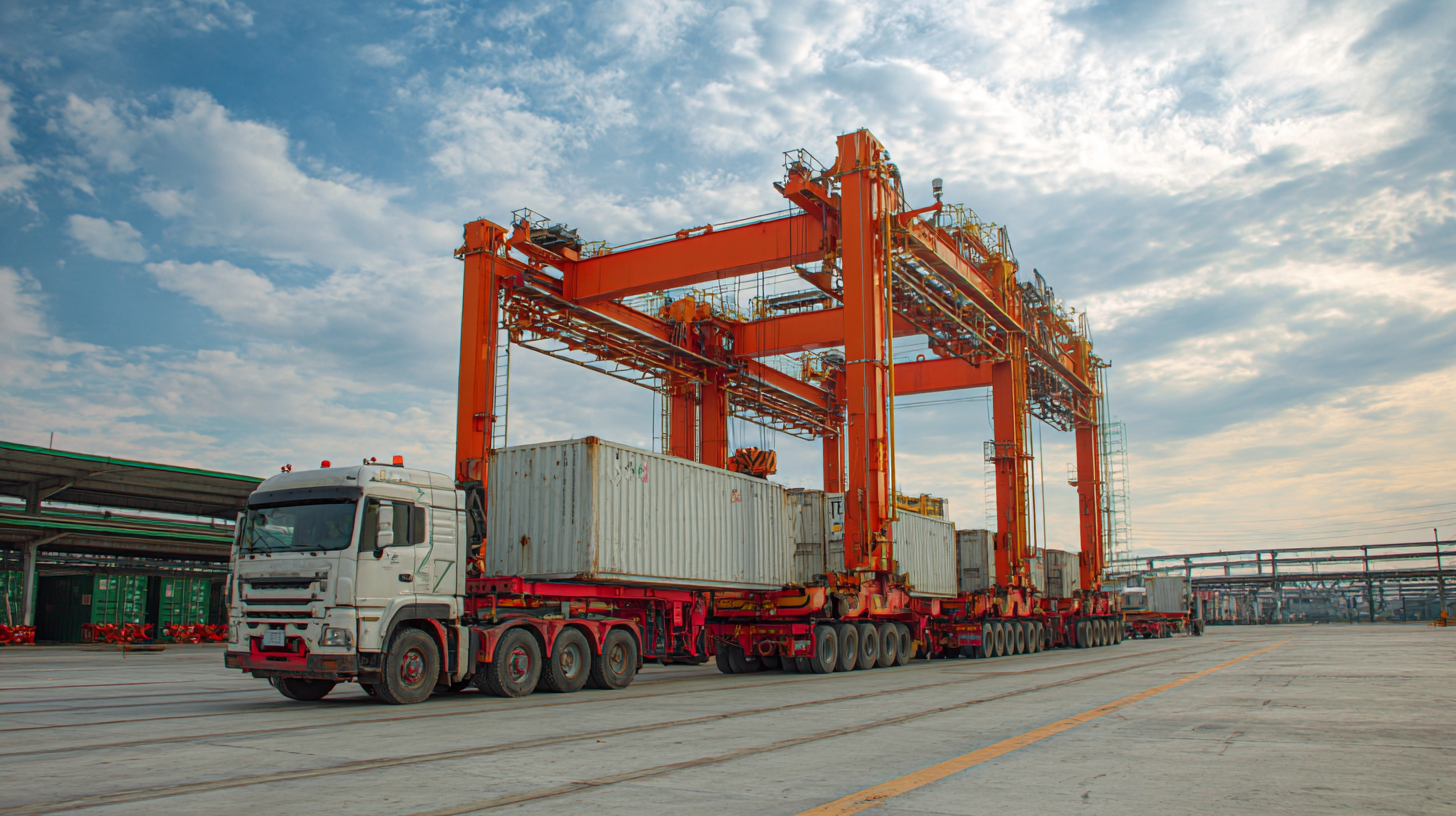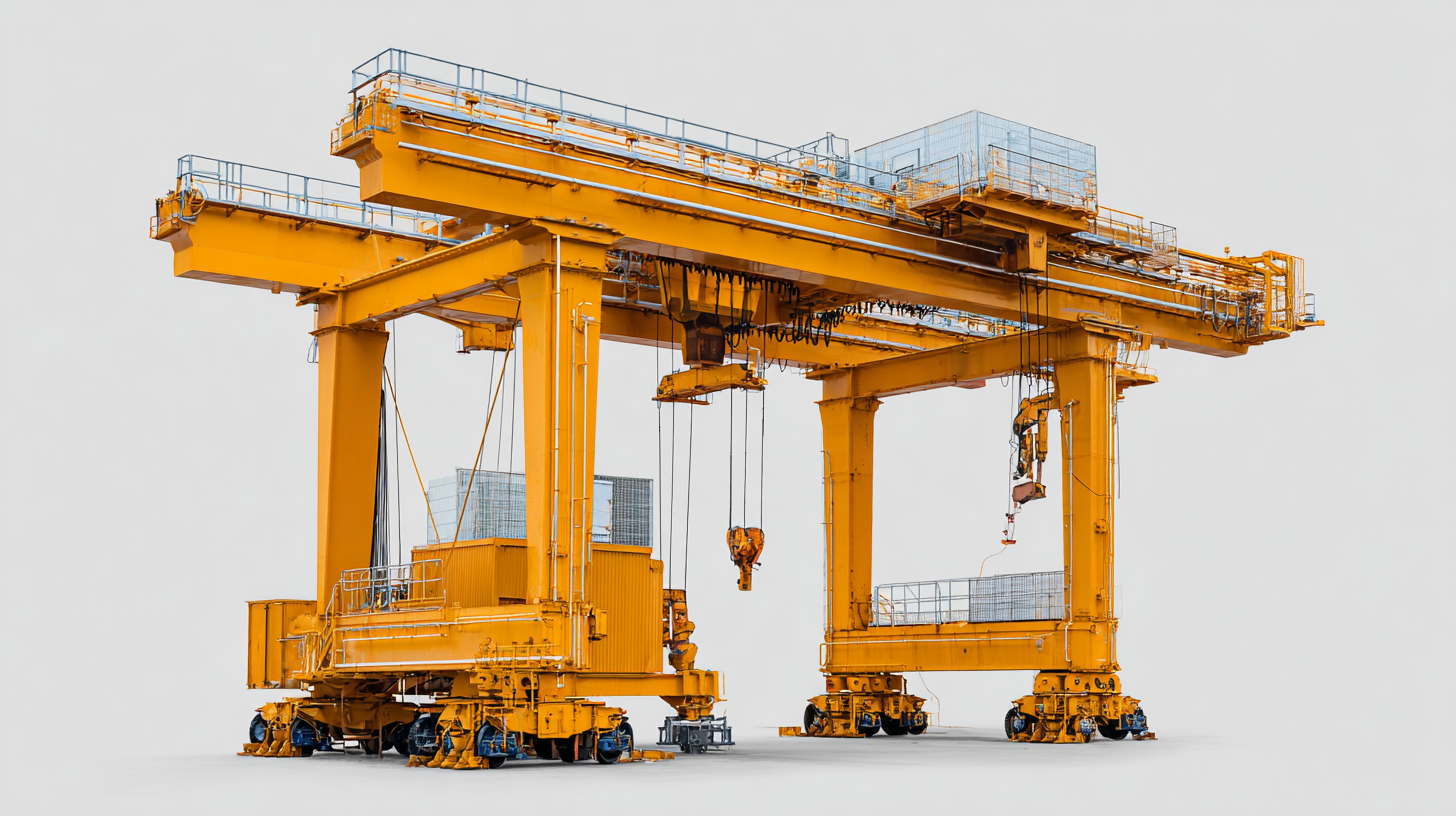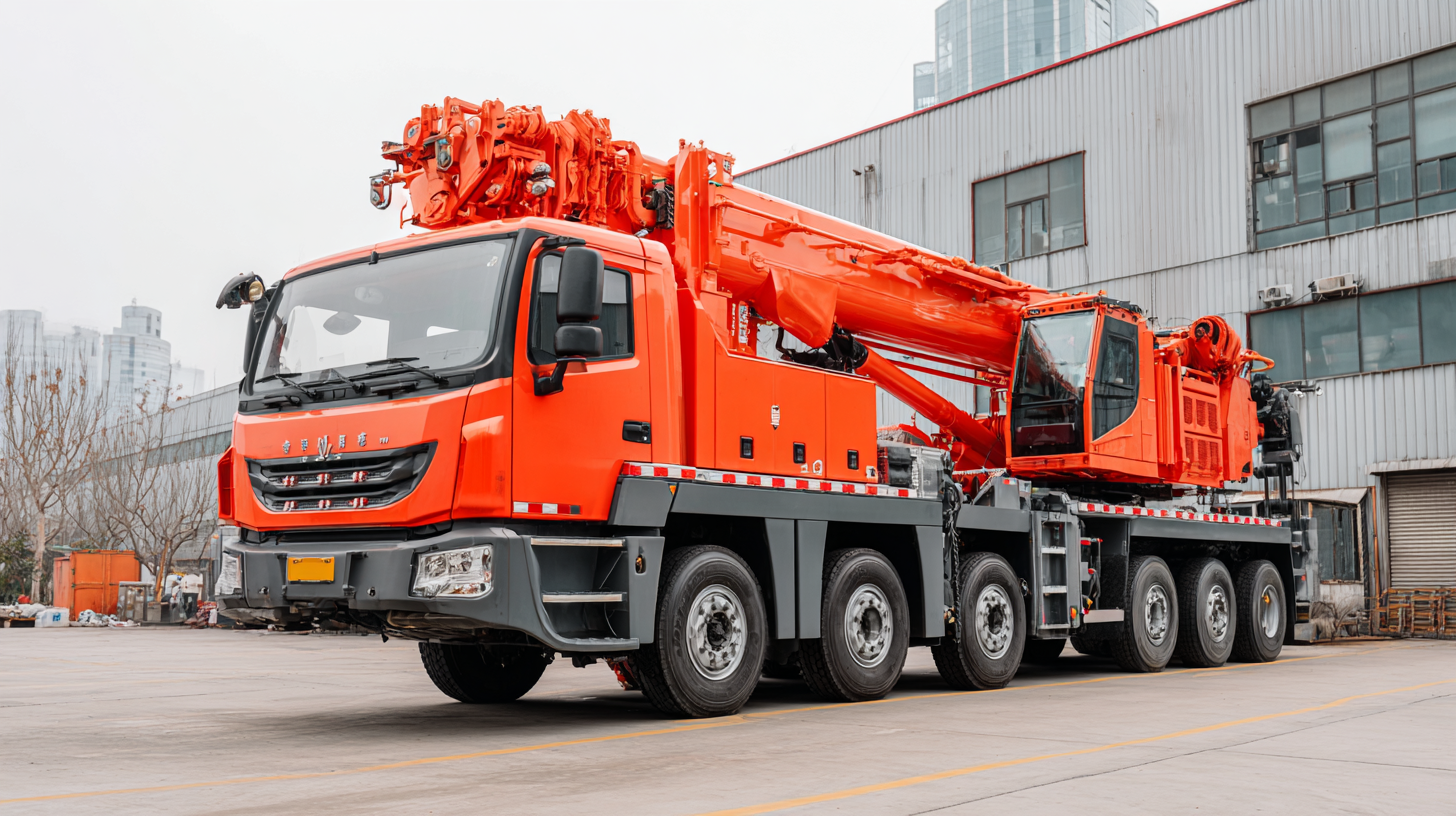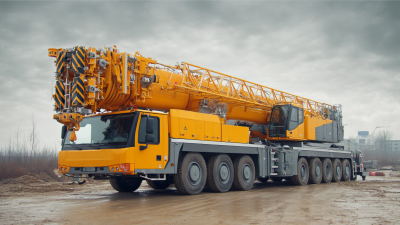Leave Your Message
-
Phone
-
E-mail
-
WhatsApp
In today's competitive industrial landscape, optimizing operational efficiency is paramount for success. With the increasing demand for heavy lifting solutions, the Semi Goliath Crane has emerged as a pivotal equipment choice for many companies in sectors such as construction, shipping, and manufacturing. According to a report by the American Society of Mechanical Engineers, cranes account for a significant portion of operational workflows, with an estimated 40% of downtime attributed to equipment inefficiencies.

By effectively utilizing a Semi Goliath Crane, businesses can enhance their lifting capabilities while also reducing cycle times and operational costs. Moreover, a study published in the Journal of Construction Engineering and Management indicates that adopting advanced crane systems can lead to productivity improvements of up to 30%. This article delves into the strategies for optimizing operations with a Semi Goliath Crane, aiming to maximize efficiency and thereby drive overall performance in various industrial applications.
The semi goliath crane is a versatile lifting solution that combines the benefits of gantry and overhead cranes, offering exceptional operational efficiency. One of its key features is the ability to operate with a smaller footprint, making it ideal for facilities with limited space. The crane’s adjustable height allows for proper clearance without compromising the load capacity, enabling it to handle a wide range of materials and tasks. Additionally, the semi goliath crane's mobility ensures it can be relocated easily within the workspace to meet dynamic operational needs.

Another significant advantage of the semi goliath crane is its cost-effectiveness. Compared to traditional cranes, it typically requires less infrastructure, which reduces installation costs and overall investment. Furthermore, the semi goliath crane provides increased productivity by allowing for faster movement and loading of materials, minimizing downtime. Its robust design ensures durability and reliability, making it a preferred choice for manufacturing, construction, and warehousing sectors where efficiency is paramount. By leveraging these features, businesses can markedly enhance their operational workflows, leading to improved output and reduced labor costs.
When considering the implementation of a semi Goliath crane in your operations, the first step is to assess your unique operational needs. Evaluate the size and weight of the loads you typically handle, as well as the frequency and duration of lifting tasks. This will help determine the load capacity and reach required from the crane. Additionally, consider the spatial constraints of your work environment, such as overhead clearance and the layout of your facility, to ensure that the crane can operate efficiently without obstructing other processes.
Another critical aspect to evaluate is the specific tasks the crane will perform. If your operations require frequent repositioning or moving loads across a wide span, a semi Goliath crane may provide the adaptability and mobility needed to enhance productivity. Assessing your operational workflow will reveal whether a semi Goliath crane can integrate seamlessly with existing equipment and processes, thus maximizing efficiency while minimizing downtime. By aligning the crane’s capabilities with your needs, you can ensure that this investment significantly improves your operational performance.
Effective load management strategies are crucial when operating a semi Goliath crane. By meticulously planning how loads are handled and transported, companies can significantly improve overall operational efficiency. One vital strategy involves weighing and assessing the loads before hoisting. This ensures that the crane's capabilities are not exceeded and helps prevent potential accidents that could disrupt operations.
 Additionally, using load indicators or monitoring systems allows operators to keep track of weight distribution in real time, fostering safer and more efficient lifting processes.
Additionally, using load indicators or monitoring systems allows operators to keep track of weight distribution in real time, fostering safer and more efficient lifting processes.
Another key aspect of load management is ensuring proper rigging techniques are employed. Using the right slings, hooks, and attachments not only facilitates smoother operations but also extends the lifespan of both the crane and the equipment. Regular training for operators on rigging best practices reinforces safety and efficiency, minimizing the risk of errors during load handling. Implementing these strategies not only maximizes the crane's performance but also contributes to a more organized workplace, ultimately leading to improved productivity and reduced downtime.
When operating a semi Goliath crane, maintaining performance and longevity is crucial for maximizing efficiency. Proper maintenance practices can significantly enhance the crane's operational lifespan, preventing costly downtimes and ensuring safety. According to industry reports, proactive maintenance can reduce operational costs by up to 30%. Implementing a regular inspection and maintenance schedule is key for sustaining optimal crane functionality.
**Tips:** Regularly lubricate all moving parts and check for wear and tear, as these simple practices can prevent major issues down the line. Additionally, staying updated on the latest maintenance technology and techniques through webinars or industry seminars can provide valuable insights. For instance, just as experts are addressing challenges in switchgear and kiosk maintenance, similar approaches can be applied to crane upkeep by using advanced monitoring systems to anticipate problems before they escalate.
Collaboration with certified service providers for periodic inspections ensures that the crane complies with safety regulations and operational standards. As trends evolve in other sectors, like wind turbine blade maintenance, the importance of staying informed on effective maintenance strategies cannot be understated. By leveraging industry knowledge and best practices, crane operators can ensure peak performance while extending equipment life.
| Maintenance Activity | Frequency | Duration (Hours) | Impact on Efficiency | Suggested Tools |
|---|---|---|---|---|
| Visual Inspection | Daily | 0.5 | High | Binoculars, Inspection checklist |
| Lubrication | Weekly | 1 | Medium | Grease gun, Lubricant |
| Load Testing | Monthly | 2 | Very High | Load cells, Load test weights |
| Electrical System Check | Quarterly | 3 | High | Multimeter, Insulation resistance tester |
| Annual Overhaul | Yearly | 8 | Critical | Various hand tools, Inspection equipment |
Training your team is crucial for ensuring safe and efficient operations when using a semi Goliath crane. A well-trained workforce not only minimizes the risk of accidents but also optimizes productivity on the job site. It’s essential to provide comprehensive training that covers both theoretical knowledge and hands-on practice. Encourage team members to understand the crane's specifications, limitations, and safety protocols, which can significantly enhance their confidence and capability while operating the equipment.
Tips: Regular safety drills and simulations can help reinforce training and ensure your team is prepared for various scenarios. Establish a mentorship program where experienced operators can share their insights and techniques with newer staff members, fostering a culture of learning and collaboration.
Furthermore, make use of digital resources and training modules that can supplement in-person sessions. Using virtual reality or augmented training tools can immerse operators in real-world situations without the risks associated with live training. Continuous education and skill refreshers should be prioritized to keep everyone updated with the latest safety standards and operational techniques.
Tips: Schedule periodic refresher courses to maintain a high level of competency among operators. Encourage feedback from your team on the training process to identify gaps and improve future training sessions.






